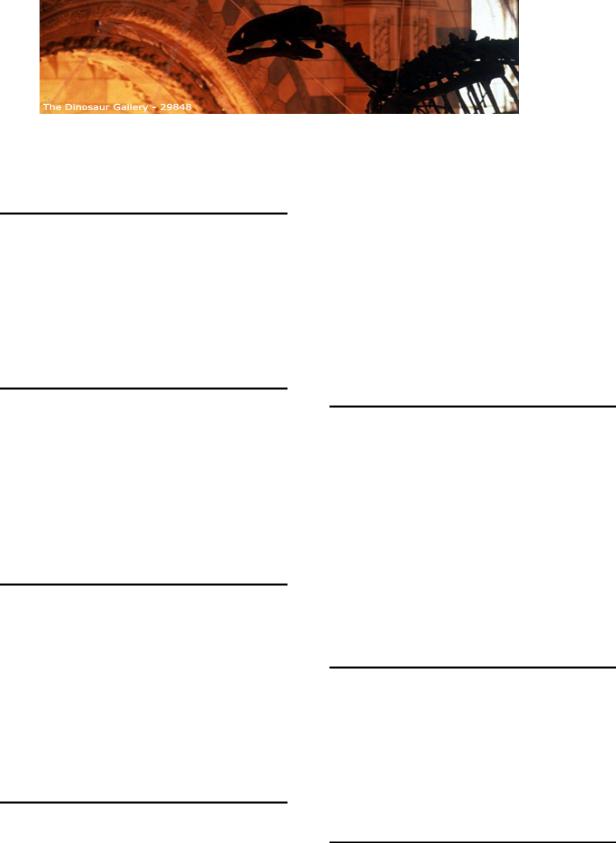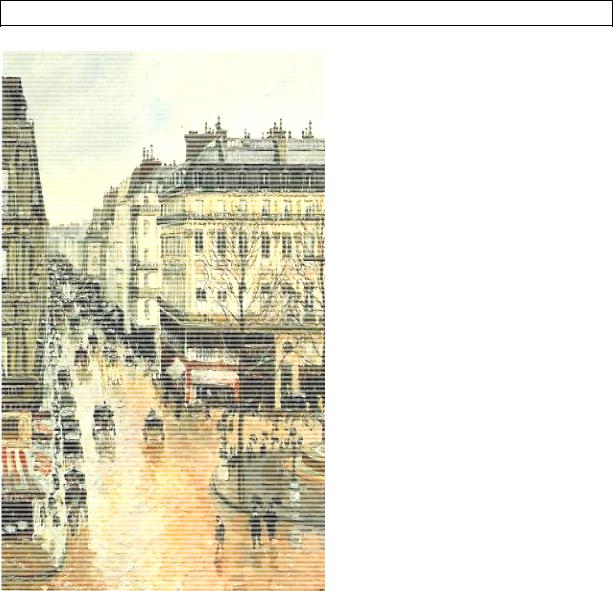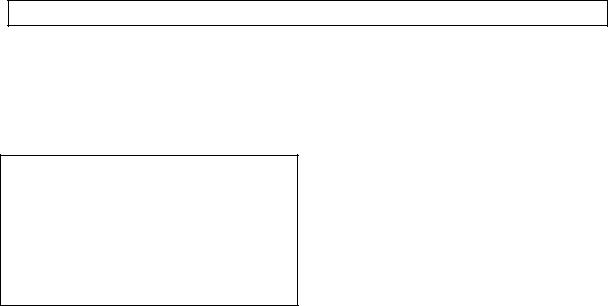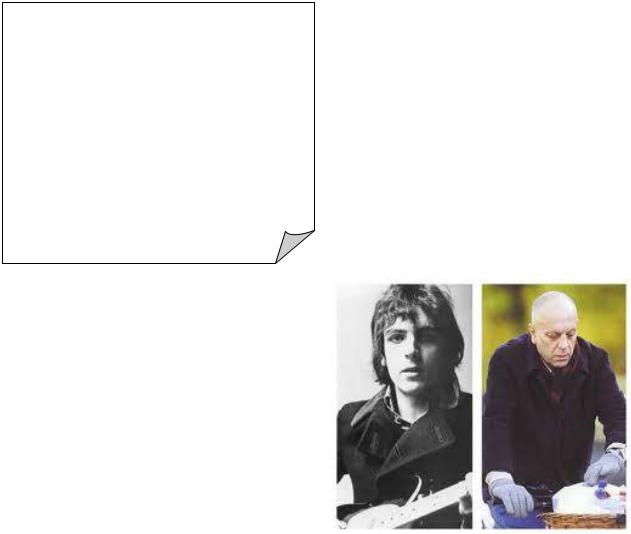
зеленый
.pdf
1. Lead-in
|
|
|
|
|
|
|
|
|
Telling the time |
|||
|
1a |
Match |
these times. Then |
weekend, it is closed. On Mondays, |
||||||||
|
it is open from ten in the morning |
|||||||||||
listen and repeat the times. Track |
||||||||||||
until six in the afternoon. |
||||||||||||
08. |
|
|
|
|
|
|
|
|
|
|||
9 p.m., 4 p.m., 6 p.m., 6 a.m., 12.55, |
1c Complete the sentences with the |
|||||||||||
10.15, |
5.40, |
4.30, |
2.45, |
9.10, |
9.35, |
|||||||
correct prepositions. |
||||||||||||
6.20 |
|
|
|
|
|
|
|
|
||||
|
six o’clock in the |
morning, |
four |
at, on, in, from, until |
||||||||
|
o’clock in the afternoon, six |
|||||||||||
|
|
|
||||||||||
|
o’clock |
in |
the |
evening, |
nine |
1 |
It closes __ six o’clock __ the |
|||||
|
o’clock at night |
|
|
|
|
|||||||
|
|
|
|
|
evening. |
|||||||
|
quarter past ten, half past four, ten |
|||||||||||
|
It is closed__the weekend. |
|||||||||||
|
past nine, twenty past six |
|
|
|||||||||
|
|
2 It closes __ ten oclock __ night __ |
||||||||||
twenty to six, quarter to three, five |
||||||||||||
|
Fridays and Saturdays. |
|||||||||||
|
to one, twenty-five to ten |
|
|
|||||||||
|
|
3 It is closed __ the afternoons and |
||||||||||
|
|
|
|
|
|
|
|
|
|
|||
1b |
Look |
at |
the |
prepositions in |
|
__ the weekend. |
||||||
4 |
It opens __ half past two __ the |
|||||||||||
these sentences. |
|
|
|
|
|
|||||||
|
|
|
|
|
|
afternoon __ Sundays. |
||||||
|
|
|
|
|
|
|
|
|
|
|
||
The museum opens at ten o’clock in |
5 It is open __ eleven o’clock __ the |
|||||||||||
|
morning __ eight o’clock __ night |
|||||||||||
the morning. It closes at half past six |
|
|||||||||||
|
__ Sundays. |
|||||||||||
in the evening. On Fridays, it closes |
|
|||||||||||
|
|
|||||||||||
at |
ten |
o’clock |
at |
night. At |
the |
|
|
|||||
1d Do you know the places in the pictures? Match the places in the box below (1-9) with their descriptions (a-h) in the brochure about London.
32

1 The British Museum |
|
2 Clink Prison |
3 The London Eye |
4 The Globe Theatre |
5 |
Madam Tussaud’s |
6 The National Gallery |
7 The Science Museum |
8 |
The Tate Modern |
9 The Natural History Museum |
Do you like modern art? Then this is the place for you!
Open: 10 a.m. – 6 p.m. (SundayThursday) and 10 a.m. – 10 p.m. (Friday-Saturday).
Bankside (Tube: Southwark). Free entrance.
This has one of the really great collections of paintings in the world. Don’t miss it!
Open: 10 a.m. – 6 p.m. (MondaySaturday) and 2 p.m. – 6 p.m. (Sunday).
Trafalgar square (Tube: Charing Cross). Free entrance.
One of the great museums in the world. There are famous exhibitions from ancient Egypt, Rome, Greece and other parts of the world.
Open: 10 a.m. – 5 p.m. (MondaySaturday) and 2.30 p.m. – 6 p.m. (Sunday).
Great Russell Street (Tube: Holborn). Free entrance.
Take a bird’s-eye view of the capital on this amazing big wheel. Spectacular views at night!
Open: 9.30 a.m. – 8 p.m. (in September until 9 p.m. on Fridays, Saturdays and Sundays; in July and August until 10 p.m. daily).
South Bank of the River Thames (Tube: Waterloo or Westminster). Adults: £11.50; students / over sixties £ 9.00; children £ 5.75; under fives free.
This wax museum has an incredible collection. There are famous people from history from Napoleon to Winston Churchill, and modern celebrities from the worlds of sport, pop and films.
Open: 10 a.m. – 5.30 p.m. (MondaySaturday).
Marylebone Street (Tube: Baker Street).
Adults: £ 13.50; children £ 10.00.
In this old London Prison you can experience prison life. You can also have your birthday party here!
Open: 10 a.m. – 6 p.m. (MondayFriday).
1 Clink St (Tube: London Bridge). Adults: £ 3.50; children: £ 2.50.
33

Visit the replica of the old theatre. Learn about the life and play of Shakespeare.
Open: 9 a.m. – 12 a.m. (Monday - Friday).
New Globe Walk (Tube: Southwark). Adults: £ 7.50; children £ 4.50.
There are over 10,000 things to see in this fantastic museum. Take a virtual rocket ride around the solar system! Open: 10 a.m. – 6 p.m. (SundayThursday) and 10 a.m. – 10 p.m. (Friday-Saturday).
Bankside (Tube: Southwark). Free entrance.
1e What places from the brochure are described in ex. 1.c? 1f These people are in London. Find places for them to visit.
1Billy loves animals and nature.
2Hannah is interested in famous people.
3Martin likes acting.
4Laura is interested in Ancient Egypt.
5Joanna likes paintings but she doesn’t like modern art.
2.Listening
2a Look at the photo below of the Winter Palace in St Petersburg. Guess which of these things the palace had at the end of the 18th century.
 2b Listen to a tour guide and check your guesses from ex. 2.a. Track 09.
2b Listen to a tour guide and check your guesses from ex. 2.a. Track 09.
 2c Listen again and write the dates for the events below.
2c Listen again and write the dates for the events below.
art gallery, church, exotic birds, fountains, hanging garden, lake, library, rare plants, school, theatre, zoo
1 _____Peter the Great founded the city of St Petersburg.
2_____Empress Elizabeth ordered Rastrelli to design a new winter palace.
3_____Catherine the Great became Empress.
4_____A fire destroyed the inside of the Winter Palace.
34

5_____The Winter Palace became the headquarters of the Russian government.
6_____It was attacked by the bolsheviks.
7_____The German siege of Leningrad began.
8 _____The siege of Leningrad ended.
2d What famous palaces or museums are there in your country / city? Tell a partner a few facts about them.
3. Reading
Pre-reading activities
3a Look at the painting and try to answer these questions.
1 What style is the painting in?
2 Where and when is the painting set?
3 What is happening in it?
While-reading activities
3b Read about the painter and the painting. Check your guesses from ex. 3.a.
3c Fill in the missing phrases from the list (A - E) to the gaps in the text. There’s one extra phrase that you don’t need to use.
A but which are so silvery, lively and bright
B such as Cézanne
C bought a collection of modern art D took part in all eight of the
Impressionist exhibitions E is going on in the street
Camille Pissarro (1830-1903) was the only painter who 1)_______________which were held in Paris. Pissarro moved there in 1855 and Paris was the place where he started to develop as a painter. He met other painters like Monet, whose work influenced him and he began his move towards
35

Impressionism. Pissarro later influenced other painters that were younger than him 2)__________. Another painter he encouraged was the young Van Gogh.
In 1893, he began experimenting with urban views of Paris which were painted from the windows of hotels or apartments. In a letter he wrote to his son, Lucien, in 1897, he said, ‘I am delighted to be able to paint these Paris streets that people find ugly 3)_______________.’
Rue Saint-Honoré. Effect of Rain is a painting which explores the effect of rain in the early afternoon. The small figures and carriages capture the movement and activity that 4)_____________. The colours Pissarro uses are not bright but he brilliantly produces the visual effect that comes from the wet streets.
After-reading activities
3d Look at the underlined words and phrases and try to explain their meaning in other words in English.
4. Language skills
4a Underline that where which who whose in the text above.
Now complete the rules with the correct relative pronoun.
a We use _____ and _____ to refer to people.
b We use _____ and _____ to refer to things.
c We use _____ to say something about possession.
d We use _____ to refer to places.
4b Look at the descriptions below. Find all the rest examples in the text.
the only painter who took part in all eight of the Impressionist exhibitions another painter (who) he encouraged a letter (that/which) he wrote to his son, Lucien
a painting which explores the effect of rain in the early afternoon
the colours (that/which) Pissarro uses
4c Look at ex. 4.b again. When can we leave out who, that, which?
awhen it come before a verb
bwhen it comes before a noun or a pronoun
4d Read the sentences below and put brackets around the pronouns which are not necessary.
Example 1 I loved the museum (that) we visited yesterday.
1 I loved the museum that we visited yesterday.
2 He was a painter whose works were sold for over $10,000 each.
36
3 The painter who you were talking to sells his paintings to the best galleries in Paris.
4 The opera that we saw was terribly boring.
5 I think the architects who design new buildings in Warsaw are too conservative.
6 Have you bought the CD which I was telling you about?
7 The place where we met is the oldest in town.
4e Fill in the gaps with who, which, where whose. Put brackets round the pronoun if it can be dropped.
I suppose I’m not a great art lover. I like poster 1_____look good in my bedroom. I usually buy posters 2_____I find in big stores. I like buying pictures 3_____go well with my mood. Sometimes, I go to art galleries 4_____I buy copies of famous paintings. I prefer pictures 5_____are realistic. Some people 6_____I know spend lots of money on paintings 7_____are really expensive and 8_____look horrible. I have a friend 9_____collection of modern art is very valuable. The paintings 10_____ he buys are perhaps more sophisticated than mine but I’m happy with my collection.
4f Add relative clauses to complete the sentences so that each says true about you.
Example 1 I enjoy watching films which make me laugh.
1 I enjoy watching films which …
2 I enjoy watching films (-) …
3 I like meeting people who …
4 I like meeting people whose …
5 I like meeting people (-) …
6 I like visiting places where …
7 I like visiting places that …
4g Write definitions of these words. actor, architect, art gallery, boutique, camera, castle, composer, library, fashion designer, portrait, ticket
Example: An art gallery is a place where …
Think of three other jobs, places objects and write their definitions. Then work in pairs and guess your partner’s words.
Example:
It’s a place where… / It’s someone who… /It’s something which…
4h Which sentence (a or b) is correct in each context?
1a musician talking about his job a I play drums.
b I’m playing drums.
2a pop star on holiday
a I don’t work.
b I’m not working.
3 a boy talking about his hobby a I take photos of rock groups.
b I’m taking photos of rock groups.
37

5. Speaking
 5a Complete the dialogue with the words and expressions below. Then listen and check. Track 10.
5a Complete the dialogue with the words and expressions below. Then listen and check. Track 10.
how, good morning, great day out, interested in, open, please, thanks very much, tickets
Tourist Information
Tourist 1_____. I’d like information about museums in London, 2_____ . Guide There are three hundred museums in London, you know! What do you want to
see?
Tourist Well, I’m 3_____science. Guide Ok, you can go to the Science
Museum. That’s a 4_____ . There are really interesting things to see.
Tourist Right. And when is it 5____?
Guide From ten in the morning until six in the evening. On Sundays, it opens at eleven and closes at eight.
Tourist How much are the 6_____ ? Guide Entrance is free!
Tourist That’s great! And 7_____do I get there?
Guide Well, you can get a bus or the tube. The tube station for the museum is South Kensington.
Tourist Where can I get a map? I don’t want to get lost.
Guide Here you are.
Tourist 8_____ .
Guide Not at all!
5.b Underline the phrases with the verb get in the dialogue. How do you say them in your own language?
5.c Work in pairs. Take turn to be a tourist and a guide in London. Use the brochure in ex. 1.d and the dialogue in ex. 1.a to ask and give information about places in London.
5b Work in pairs. Complete the questions (1-6) to find out about your partner’s interests in art. Interview each other and tell the class your partner’s taste in art.
1 Do you go to galleries where … ?
2 Do you have friend (who) … ?
3 Do you like pictures that … ?
4 Do you often watch programmes (which) … ?
5 Do you like artists who … ?
6 Do you buy posters which … ?
6. Extra Activities
6a You are going to read about a famous recluse. What is a recluse? Guess, then read the information below to check your answer.
A recluse is someone who:
a)likes media attention.
b)avoids media attention.
38

c)comes back after a period away from media attention.
Out of sight, out of mind?
In today’s multi-media age, it seems no artist with something to sell can afford not to do interviews and chat shows to publicise their latest product. People’s interest in celebrity means we often know more about the artists than their work. Below, our reporter Wendy Finch profiles the recluse from the world of the arts who decided not to play the media game. Why are we fascinated by the artists themselves when really their work should speak for them?
6b Read more about one recluse and answer the questions.
1 How is the person’s character described in the article?
2 What is his most famous piece of work?
3 What did he do later in life?
4 How was his relationship with media?
5 Is there anything surprising in the article?
SYD BARRETT (1946-2006)
At the Pink Floyd reunion in London’s Hyde Park for Live8, there was one member missing.
Often called an eccentric genius, Syd Barrett formed the supergoup Pink Floyd in 1965 and wrote, sang and played guitar on all their early hit records, including the 1967 masterpiece Piper at the Gates Dawn. He left the band in 1968 after
experiencing some kind of breakdown due to the pressures of stardom and touring. He made two solo albums, The Madcap Laughs and Barrett, both released in 1970, which continue to sell well.
Barrett then left the music business completely, deciding a musician’s life was not for him. He did not make any music at all after 1974. Once a household name, he is now more or less forgotten except by his fans. He moved back to his home town of Cambridge and started to use his original name of Roger Barrett.
He lived alone, quietly spending his time painting and gardening. He received a six-figure income from his Pink Floyd royalties, but his contact with the outside world was minimal. Although he hadn’t appeared or spoken in public since the mid1970s, fans and journalists still attempted to contact him.
In 1971 a journalist tracked him down. Syd told the reporter that he walked a lot, painted, wasted time and feared getting old. He also said that he felt full of dust and guitars.
39

Another journalist reported that a bald, fat man answered the door and said that Syd couldn’t talk. In 1992, Atlantic Records offered half a million dollars for any new Syd Barrett recordings.
His family reported that he was content and reasonably healthy. More recently, when fans or journalists called on him he was polite and coherent, but unwilling to discuss his past as a famous rock star. Talking to one journalist on his doorstep in 2001, Syd asked him to leave as he didn’t do interviews any more.
6c Find words or phrases in the text that mean the following.
aa very successful record or CD
ba great work of art
ca very well-known person
dpayments made to writer of a book, song, etc.
eto issue (a record, film, book, etc.) for sale or circulation
fthe fame and prestige of being a star in films, sport, etc.
ga person or thing that is very well known.
6d In groups, discuss the following.
1What is so special about the person in this profile? Why can this profile be interesting?
2Do you think celebrities have the right to a private life?
3Which books, songs and films do you think are masterpieces?
4What rumours about media celebrities have you heard recently?
7. Writing: Project Work
7a Get ready to give a two minute Power Point presentation about a famous painter, singer, sculptor, etc.
Find some information about this person on the Internet, in magazines or books
Process and structure the information using the Power Point software
In your presentation, include visual aids together with the information about the person’s early life, later life
Present your findings to the class
40

7b Match the phrases in the box with the appropriate point in the presentation plan.
Today I’ll be showing you/ reporting on … The subject / topic of my presentation is … Let’s now look at the next slide which shows
…
Are there any questions?
My presentation will take about 10 minutes. There will be time for questions after my presentation.
To conclude / In conclusion, I’d like to … In this part of my presentation, I’d like to talk about …
I’d like to summarise what I’ve said so far … So much for point two.
It’s a pleasure to welcome you today Let’s now move on / turn to …
Well, that brings me to the end of my presentation.
Let me just start by introducing myself. My name is …
I’ve divided my presentation into three main parts.
1Introduction
a welcoming the audience
bintroducing yourself
cintroducing your topic and purpose
dmentioning the structure, timing and question time of the presentation
2 The main part
asaying what is coming
bdescribing visuals
csummarising every point
eindicating the end of the section and moving to the next part
3 Conclusion
aindicating the end of your talk
bsummarising points
cinviting questions
41
